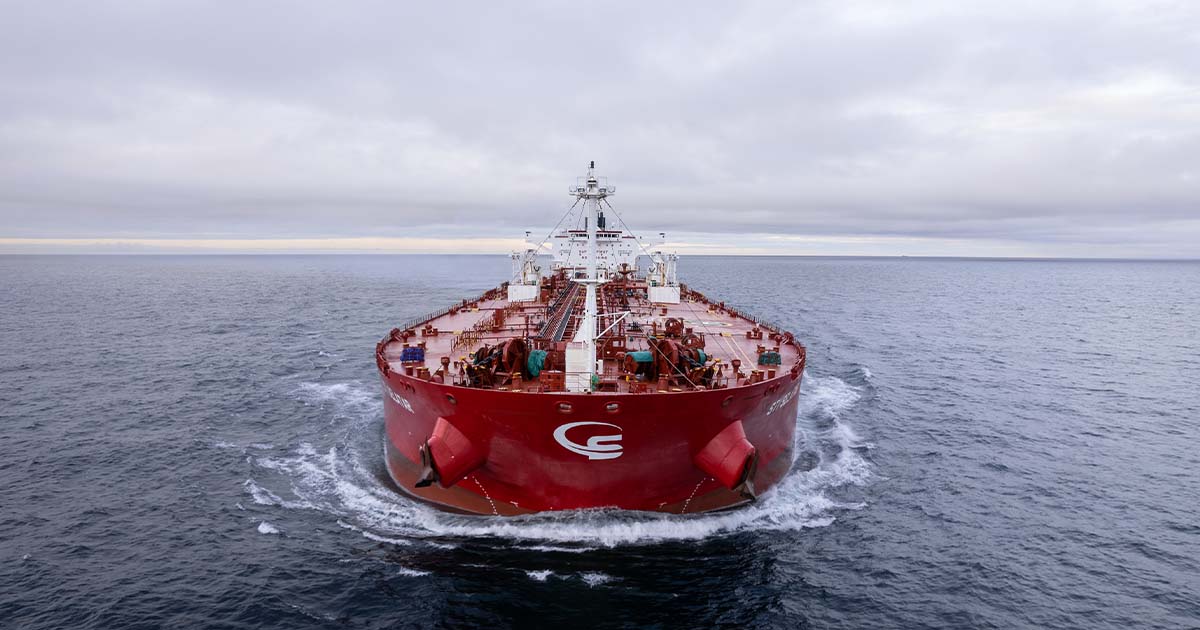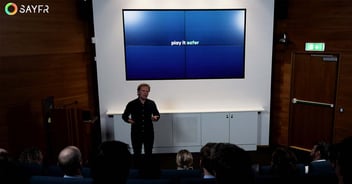At a time of vast expansion, shipping company Scorpio realized that the people needed to grow too. Under Emanuele Lauro’s (CEO) and Cameron Mackey’s (COO) leadership, they addressed their challenges head-on through organizational culture.
The shipping industry moves slowly. Legacy is often embedded from decades of operating from memory, and resistance to change is expected. So, when Scorpio experienced unprecedented growth – from a few to over a hundred and fifty vessels – a few years back, they realized they required a new approach to ensure the entire organization was moving in the same direction.
In an industry where masculinity historically has been a dominant quality, developing the soft skills needed for organizational culture change is not necessarily natural. For Scorpio, their vessel boom from 2011–2015 also meant that several cultures and subcultures were coming together in one extensive system. They needed what Cameron Mackey states as “a common language.”
Back to Basics
Fletcher Martins, Group Director – Safety & Quality Assurance, reminisces about when random undesired events were a regular activity at Scorpio:
– When something came up, we handled it retroactively, only to wait for the following unfavorable event to unfold. As a people-oriented organization, we knew we needed to address the issues from within, Mr. Martins explains.
The goal quickly became to implement a thought process that matured the company as a whole, to become a proactive organization, and to speak openly about risk and failure.
The fact that culture eats strategy for breakfast is well-known. For Scorpio, a natural starting point became understanding their culture. Pinpointing a whole organization’s culture is not done in a hurry. Scorpio used the better part of a year to grasp who they were.
Once they had established a common ground, it was time to look ahead. How do you get a large organization of thousands of employees who originate from different cultures, nationalities, religions, and genders to move in the same direction? There is no one-shoe-fits-all solution for a task this vast. Luckily for Scorpio, science and technology were about to catch up to their ambitions.
Clarity of Thought
Cameron Mackey and Fletcher Martins knew of the people at SAYFR from before. Knowing they were working on a digital solution that would enable Scorpio to address their issues – not common problems – made them appealing as a collaboration partner for driving organizational culture forward.
The onboarding process with SAYFR steadily revealed the status of Scorpio’s cultural strengths and weaknesses. Within months they got a clear understanding of what came next.
– Assessing one’s culture is one thing; improving it is quite a different ball game, says Fletcher Martins.
The initiators at Scorpio estimate that thirty percent of their organization were willing to invest in the new direction at once, thirty percent would be hesitant, and the rest were ready if the solution was engaging enough. A bottom-up, as well as a top-down approach, was called for.
Approaching the organization on all levels has resulted in what Cameron Mackey describes as “appealing to the subconsciousness”:
– The real benefit of combining science and gamification is that while you play, your subconsciousness evolves. Our crew plays the simulations twice the required amount! We now have safety ambassadors on every ship, working challenges together, Mr. Mackey expresses enthusiastically.
Slow and Steady Wins the Race
A year and a half after implementing SAYFR’s eight Leadership Behaviours (LB), Scorpio is beginning to speak a common language about culture and safety. Cameron Mackey, however, has a pragmatic view on the scale and frame of the process’ impact:
– We do not expect significant results until a few years have passed. We regard any improvement we can make until then as a bonus. Moreover, our journey is as substantial as the ultimate goal.
According to Cameron Mackey, an organization can trace all successful transformations to its culture. Once you establish a healthy organizational culture, you have the foundation for further progress and will get easier acceptance for the next challenge.
Culture as a Competitive Advantage
Building a solid safety culture has helped Cameron Mackey and his organization break down silos – incorporating everyone in the same strategy. Scorpio started focusing on their seafarers, with ship management as the fuse. However, once the fuse was lit, it took only a short time until the seafarers were involved.
The ripple effects have been noticeable already. As Fletcher Martins quite precisely puts it: When you focus on safety from a cultural perspective, you look at the human element of processes. In return, you gain engagement, efficiency, and reduced downtime, maximizing your potential for success.
The leadership team is excited about the future development of Scorpio’s culture and operations. They are eager to see the process develop with the organization and assist them in becoming sustainable on the people and business side of operations.
For Scorpio, and the industry, according to Fletcher Martins, addressing the organizational culture is pivotal to ensure improved productivity, regulatory compliance, reputation enhancement, cost savings, and sustainable business practices. Furthermore, modern clients and investors expect seriousness in culture and safety – no one wants to figure in scandalous news articles with accidents that could have been avoided.
All Scorpio needed was an effective solution to get started. Cameron Mackey is crystal clear on the output of working with SAYFR:
– We understand ourselves, our strengths, weaknesses, and limitations. With this understanding we have a very clear idea of where we need to go and how we will get there, he concludes.








